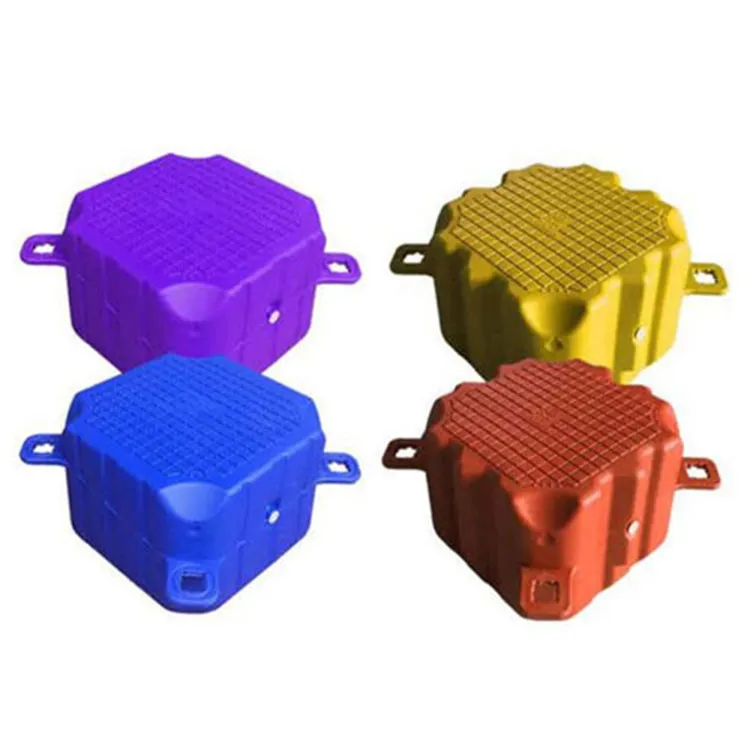What is a Marine Buoy, and Why is It Important in Maritime Operations?
2024-09-20
When you think of the ocean, images of vast blue waters, ships, and maybe even lighthouses come to mind. But there’s another critical tool in maritime navigation and operations that often goes unnoticed—the marine buoy. These floating devices play an essential role in ensuring the safety of vessels, guiding navigation, and supporting various ocean-related activities.

What is a Marine Buoy?
A marine buoy is a floating object anchored to the seabed, designed to serve specific purposes, such as navigation, marking safe routes, indicating hazards, or supporting scientific data collection. Unlike a floating boat or vessel, a buoy stays in a fixed location, thanks to a heavy anchor and chain system.
Buoys can be found in oceans, seas, rivers, lakes, and harbors, and they are highly visible both during the day and at night due to their bright colors and light signals. There are several different types of marine buoys, each designed for specific uses, from marking the boundaries of shipping channels to collecting environmental data.
Types of Marine Buoys
Marine buoys come in various types, depending on their function. Here are some of the most common kinds:
1. Navigation Buoys
These buoys guide ships safely through channels and around obstacles. They are part of a marine navigation system called the "lateral marking system" and come in different shapes and colors to convey specific information. For example, green buoys typically mark the left side of the channel when entering from the sea, while red buoys mark the right.
- Can buoys are cylindrical and mark the left side of the channel.
- Nun buoys are cone-shaped and mark the right side.
2. Mooring Buoys
Mooring buoys are designed to secure vessels without anchoring directly to the seabed. Ships and boats can tie to these buoys to prevent drifting. Mooring buoys are commonly used in harbors, marinas, and areas where it’s difficult to drop an anchor due to depth or seabed conditions.
3. Weather and Data Buoys
These buoys collect environmental data such as wind speed, temperature, wave height, and water quality. They are equipped with sensors and communication equipment to transmit real-time information to meteorologists, oceanographers, and other scientists. Weather buoys play a crucial role in monitoring ocean conditions and forecasting severe weather.
4. Special-Purpose Buoys
Some buoys serve specific roles beyond navigation and data collection. For example, hazard buoys mark dangerous areas like submerged rocks or shipwrecks. Regulatory buoys may indicate no-wake zones or restricted areas, while scientific buoys are used for oceanographic research.
Why Are Marine Buoys Important?
Marine buoys are an integral part of maritime safety and ocean research. Here are some key reasons why they are so important:
1. Navigation and Safety
Buoys provide critical information to sailors, helping them avoid dangers like shallow waters, underwater obstructions, and other hazards. In heavily trafficked areas such as shipping lanes, they act as road signs for mariners, ensuring vessels follow safe, established routes. This reduces the risk of collisions and groundings.
At night or in foggy conditions, lighted buoys help vessels navigate safely by flashing light signals that are visible from miles away.
2. Environmental Monitoring
Weather and data buoys continuously collect information on oceanic conditions, contributing to environmental monitoring and climate research. Data from these buoys help scientists study climate change, understand marine ecosystems, and monitor pollution levels. They also assist in forecasting dangerous weather events like hurricanes or tsunamis.
3. Maritime Commerce
In commercial ports and harbors, buoys are vital for directing ships to docking areas and managing vessel traffic. By clearly marking navigational channels, buoys ensure smooth and efficient maritime commerce, preventing accidents that could disrupt shipping routes and economic activities.
4. Recreational and Scientific Purposes
Buoys also play a role in recreational activities like sailing and fishing. In addition, scientific buoys gather essential data for oceanographic research. By measuring currents, temperature, and salinity, these buoys help scientists gain a deeper understanding of ocean systems and marine biodiversity.
How Do Marine Buoys Work?
A marine buoy typically consists of the buoy body (which floats), a mooring line, and an anchor. The body is designed to stay on the surface while being anchored to the seabed. The materials used in buoys vary based on their purpose, but most modern buoys are made from durable materials like plastic, steel, or foam to withstand the harsh conditions of the marine environment. Lighted buoys are powered by solar panels, batteries, or even wave energy. These lights are often synchronized to flash specific patterns, helping mariners identify the buoy and its message. Buoys that transmit data have sensors attached to them. This data is sent via radio, satellite, or cellular networks to central monitoring stations, providing real-time information.
Marine buoys are more than just floating objects—they are essential tools for ensuring maritime safety, supporting ocean navigation, and contributing to scientific research. From guiding ships through tricky waters to providing critical environmental data, buoys have a wide range of applications that make them indispensable to marine operations. Next time you spot a buoy floating in the water, you’ll know it’s not just a simple marker—it’s a vital part of the marine world!
Shandong Power Industry and Trade Co., Ltd. is a large heavy industry enterprise specializing in the research and production of ship anchor chains, ocean mooring chains, steel plate welded anchors, and mooring buoys. The company has established three major production bases in Suqian, Taixing, and Qingdao.Learn more about what we offer by visiting our website at https://www.andymarine.com. For questions or support, contact us at [email protected].



